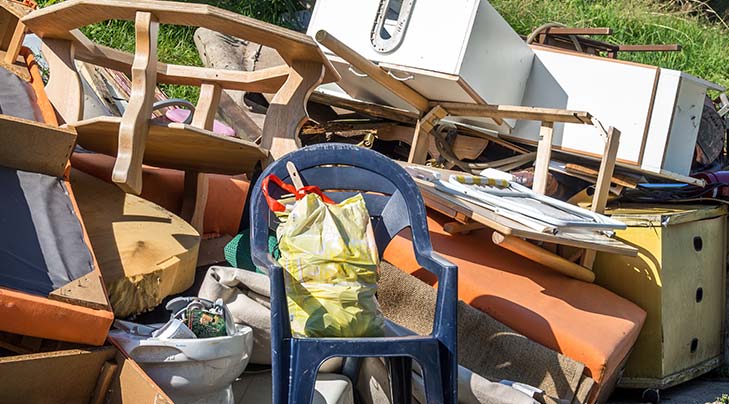Have you ever noticed how hard it is to get rid of junk? For most folks, junk is a collection of unwanted items and appliances just begging to be thrown out. But for whatever reason - work obligations, busy schedules, over-worked brains, or plain old procrastination - we're woefully content to let the junk sit. If you're sick and tired of all the old, junky items in your home and want more room to live and play, you need junk removal in Lake Harbor, FL, today.
At Labor Bros, we mix the most comprehensive junk removal in town with the highest quality general labor services available. That makes Labor Bros your one-stop shop for all your junk hauling and labor needs, from house cleaning to power washing and just about everything in between. Our customers choose Labor Bros because we prioritize friendly, helpful customer service and good old-fashioned hard work. We take pride in our work, and you see evidence of that with each of our Labor Bros, who are anxious to work hard for you, no matter the size of the project. We're very proud of the fact that we're locally owned and operated. We know the local roads, grew up in these parts, and know the people. As such, we offer fair and competitive pricing for all our customers, whether they're new or returning.
Our goal is to make your life easy, so you can focus on the most important aspects of life while we handle the hard stuff. We understand that your life is busy, and you probably don't have the time or energy to haul away old junk or climb up on a ladder to trim your trees. Why risk a trip to the emergency room when you can call the Labor Bros to handle the heavy lifting? At the end of the day, we do the jobs that you can't or just don't want to do - and that makes us happy. Just click or call and consider it done!
Our fully trained Labor Bros have extensive experience, unmatched work ethic, and crazy cardio. This combo lets them tackle a wide variety of junk removal and labor service projects, including:
The Top Junk Removal Company in Lake Harbor, FL
On average, the typical American creates more than four pounds of waste every day. That figure doesn't include the items in your home that need to be hauled away but remain for whatever reason. The reality is most South Carolina residents have tons of junk lying around that they don't need. Unfortunately, most of us don't have the time or patience to get rid of these items in an efficient, eco-friendly way. That's where Labor Bros junk removal swoops in to save the day.
What is Junk Removal in South Carolina?
If you have never used or even heard of junk removal, don't sweat it - we've got you covered. Junk removal is an on-call service that removes all of the old trash and junk from your home or business. It works like this:
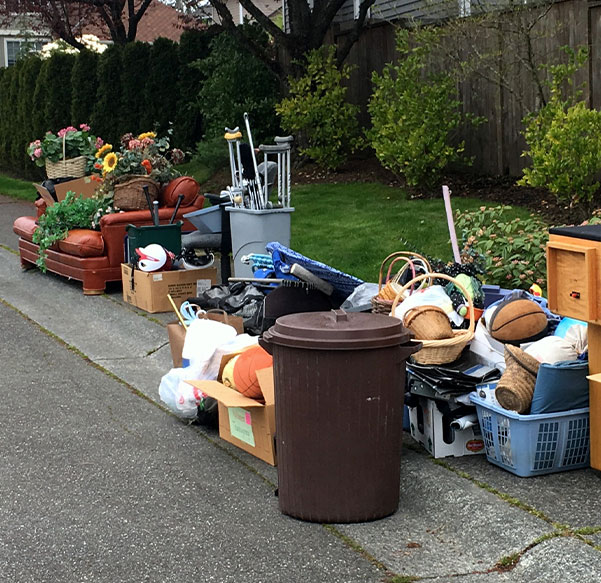

Call or Click
You give our office a call or use our online contact form to set up an appointment. You let us know how much junk we'll be hauling in our junk removal trucks. You then choose a time and date for an appointment, and the Labor Bros will be there on time, ready to work.

Haul Away
Once you give us the green light, our team will get to work hauling all your old debris and junk items from your home or office. It's that simple!

Time and Date
We'll come to your location to get the full scope of the job we're completing for you. Once we do, you get a no-obligation, affordable quote.
What Are the Most Common Junk Removal Items?
Here at Labor Bros, we've hauled away an incredible amount of junk since we opened our doors. Whether it's the hundreds of unsightly, heavy mattresses or old, unusable TVs, our crew has hauled some serious junk over the years. For each truckload of junk that we remove from a home or business, we work hard to donate applicable items and recycle others, to give back to the community and keep it clean.
When it comes to junk removal in Lake Harbor, FL, here are some of the most common items we remove:
Mattresses
Even the best mattresses will need to be replaced with enough time. Over the years, your mattress will begin to break down, causing you more pain than pleasure when your head hits the pillow. When your quality of sleep is affected, so too is your day-to-day life and wellbeing. To make matters worse, your old mattress is a haven for dead skin cells, hair, and even bugs. When it gets to this point, it's time to get rid of your mattress. Unfortunately, that can be easier said than done, especially if you're working 40 hours a week and must balance a family too. Luckily, the Labor Bros can remove your old mattress quicker than it takes you to snooze on a Sunday afternoon.
Labor Bros Pro Tip: Mattress parts like steel springs, wooden frames, and coils can often be donated or recycled. Our team is happy to handle this part of the junk removal process, so you don't have to!
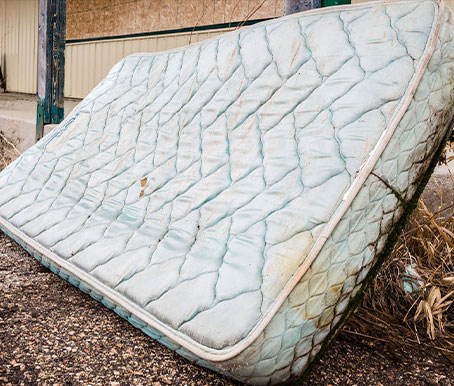
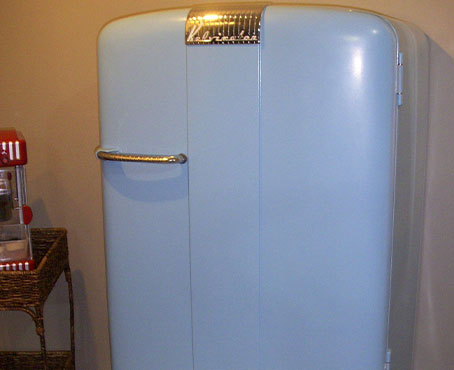
Refrigerators
If you plan on upgrading your kitchen, chances are you will need to update your old fridge too. Refrigerators are notorious for being big, clunky, hazardous appliances to remove. Most folks don't want to deal with the lengthy process of removing the appliance and disposing of it safely. That's where the Labor Bros come in! Whether you have a regular-sized fridge at your home or several large chest freezers at your business, the Labor Bros are here to haul them away today.
Labor Bros Pro Tip: Remember, many refrigerators and freezers have harmful chemicals that need to be disposed of properly. The Labor Bros always take these hazards into account, so you don't risk your health. Once these materials have been dealt with, our junk removal experts will either donate your unwanted fridge or haul it to the appropriate recycling facility.
Flat Screen TVs
With new technology and features debuting every other day, it's no surprise that we haul away old TVs every day. Whether you're moving to a new home or just want a new TV, we can remove your old flat screen quickly and safely. Our customers choose the Labor Bros for their TV removal not just because we're fast and effective, but because many modern TVs contain hazardous materials. Once our team removes your old TV from your home or business, we'll make sure your TV is disposed of in an eco-friendly manner.

Your First Choice for General Labor in Lake Harbor, FL
In addition to our junk removal services, Labor Bros also offers the highest quality general labor services in South Carolina. In today's fast-paced world, many home and business owners don't have the time or staff to handle labor-intensive jobs like garage cleanouts and yard debris removal. There's no need to call in a favor with your best friend or father-in-law. Contact the Labor Bros for fast, efficient service for any of your general labor projects. We save you time, money, and the possibility of injuring yourself or your friends.
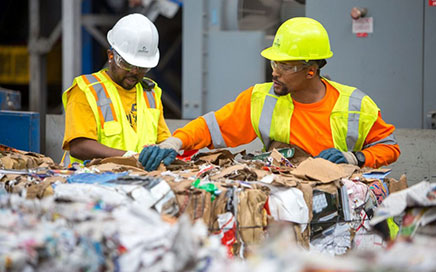
General Labor Services for Residential Needs
If you own a home, you probably know how frustrating it can be to keep up with odd jobs around the house. Sometimes, you need a little more than a helping hand - you need a team of experienced professionals to get the job done right. And that, in a nutshell, is why we founded Labor Bros - to give good people like you the chance to keep their homes looking great, inside and out. Here are just a few of the most common general labor jobs we complete for homeowners in South Carolina:
Garage Cleanouts:
If you're anything like us, your garage space doubles as a storage unit. Over time, the items you store in your garage can pile up. Often, these items go unused for years, essentially becoming junk right before your eyes. At some point, you will need all that junk and debris cleaned out. When you want it done right, it's time to call the Labor Bros. Our team will not only remove the junk from your garage - we'll clean your garage afterward, so it looks and feels like it was brand new.
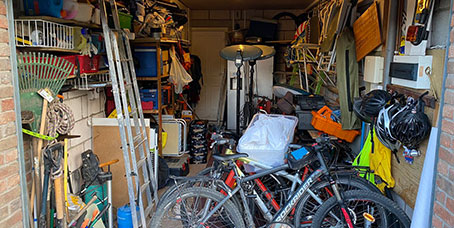
Yard Debris Cleanup:
Cleaning up your yard debris can be a real pain in the butt. You need the right clothes to protect your legs and arms, gloves for your hands, possibly a back brace, and a lot of patience. After you're done, you're bound to need a shower and a long break. With all that in mind, it's no wonder why so many South Carolina residents call the Labor Bros for yard debris removal! Our general labor techs have cleaned up dozens if not hundreds of yards, and they can help you too. We make yard debris cleanup easy by taking everything: limbs, leaves, grass clippings, wood chips, and more. Simply click or call, and we'll haul it all!
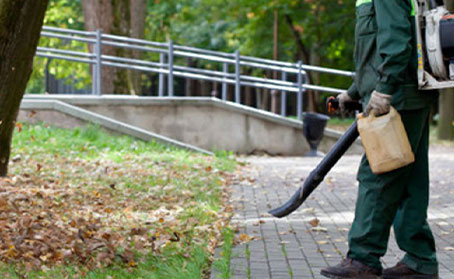
Assembly Services:
If you just bought a new couch or desk but don't have the time to set it up yourself, call the Labor Bros for a fast solution. Whether you're moving into a new home and you need help mounting your TV, or you need a large piece of furniture assembled, we can do it all.
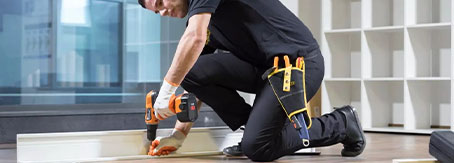
General Labor Services for Commercial Needs:
At Labor Bros, we don't just serve homeowners - we offer general labor and junk removal services for businesses too. All businesses generate junk in some form or fashion. Typically, entrepreneurs don't have the time to handle junk removal and odd jobs like window washing on their own. That's why business owners in South Carolina trust the Labor Bros - because we make their lives easier and more productive, at a reasonable rate. If you're sick of making complicated arrangements that don't fit your business needs, it's time to call our office. We can help with just about any general labor services you need, from removing old office furniture to transporting new equipment to your job site.
Here are some of our general labor specialties for local business owners:
- Interior Cleaning & Maintenance
- Exterior Cleaning & Maintenance
- Window Washing
- Office Cleanouts
- Moving Services
- Parking Lot Surfacing
- Much More
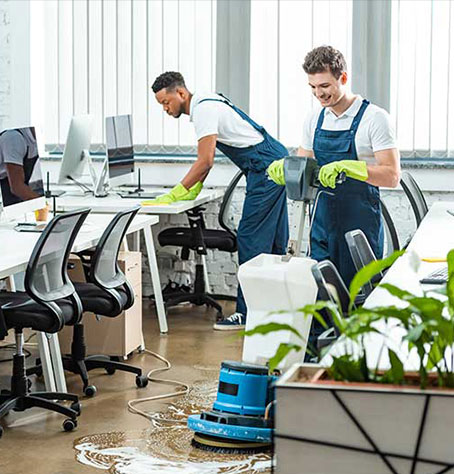
Too Big? Too Heavy?
Let the Strong Men Move It!
Call or Text 815-931-3993 to receive a FREE QUOTE or to set up your
appointment Today!
The Labor Bros Junk Removal
Difference
At the Labor Bros, we do junk removal a little differently than our competition. We strive to provide the very best residential and commercial junk removal in Lake Harbor, FL. To achieve that goal, we prioritize customer service, meaning our clients come first before anything. We know it can be hard to trust junk removal companies, which is why we offer transparent services and pricing. No small print. No sneaky fees. Just hard work at a cost-conscious rate.
As professionals, we treat your home or business like it was our own. Our Labor Bros will work as long as it takes to get the job done while respecting your space. At the same time, we're not your cable TV technician, so we won't be moping around your house all day. We'll show up on time and get the job done effectively, so you can get back to living life.
When you book an appointment for junk removal, you can feel good knowing we'll recycle as much of your used junk as possible - because Mother Earth needs a helping hand too. If you're looking for a hassle-free junk removal experience with fair, upfront pricing, look no further than the Labor Bros.
 815-931-3993
815-931-3993
Free Consultation
Latest News in Lake Harbor, FL
Surprising genetic differences found in Iliamna Lake harbor seals
Chynna Locketthttps://deltadiscovery.com/surprising-genetic-differences-found-in-iliamna-lake-harbor-seals/
In Alaska, harbor seals thrive in the chilled water of Iliamna Lake, sliding their blubbery bodies onto floating pieces of ice for a winter rest. This group of round-eyed water dwellers has remained a mystery for years, but now, in partnership with local Indigenous communities, scientists have found surprising genetic differences in the seals.Results of their study, published in the journal Biology Letters, reveal that the seals in Iliamna Lake are notably different at multiple genetic markers from the seals found not only in...
In Alaska, harbor seals thrive in the chilled water of Iliamna Lake, sliding their blubbery bodies onto floating pieces of ice for a winter rest. This group of round-eyed water dwellers has remained a mystery for years, but now, in partnership with local Indigenous communities, scientists have found surprising genetic differences in the seals.
Results of their study, published in the journal Biology Letters, reveal that the seals in Iliamna Lake are notably different at multiple genetic markers from the seals found not only in waters that flow from the lake downstream to Bristol Bay but also in the broader Pacific Ocean. Findings indicate that Iliamna seals are likely evolutionarily, reproductively and demographically discrete from other seal populations in the Pacific and could be a unique endemic form of harbor seal.
The study was conducted by scientists from Florida Atlantic University, the University of Alaska Fairbanks, the University of Washington and the National Oceanographic and Atmospheric Administration.
Donna Hauser, research associate professor at the UAF International Arctic Research Center, began studying the Iliamna Lake seals as an undergraduate student at UW. She’s still passionate about the work 25 years later and co-authored the research paper.
“Iliamna seals are super interesting and unique,” Hauser said. “There are only five different populations of seals who live year-round in freshwater across the entire world, and some of those are recognized as different species and subspecies. Iliamna seals have received relatively little scientific study.”
That’s partly because their remote location makes the elusive seals difficult to research. A long-standing question has been whether the seals in Iliamna Lake are genetically different from those in Bristol Bay, the nearest marine population.
Iliamna seals have long been known to the Dena’ina Athabascan and Central Yup’ik peoples of southwestern Alaska, who have deep cultural and dietary ties to the creature. The initial critical samples for this research came from Alaska subsistence hunters, providing early hints that seal movements between Iliamna Lake and Bristol Bay might be limited.
The rest of the samples came from seal scat that Hauser gathered upon revisiting Iliamna Lake in 2015 and 2017.
“The scats did indeed produce viable DNA for extraction and greatly bolstered the sample size to be able to conduct more detailed genetic analyses,” said Hauser.
The research team conducted a genetic study of Iliamna Lake seals and compared them to seals across almost the entire Pacific range.
The seals in Iliamna Lake were significantly differentiated from seals sampled at several regions across the Pacific, including Japan, the Commander Islands in Russia, other locations in Alaska, and California. They had lower levels of variation at the selectively neutral markers investigated and somewhat higher estimates of inbreeding compared to the marine populations.
“Our findings are both striking and unexpected,” said Greg O’Corry Crowe, senior author, program lead and a research professor at FAU Harbor Branch Oceanographic Institute. “Indigenous knowledge and early Russian explorers’ accounts suggest that the seals have been in Iliamna Lake for at least 200 years. However, it’s still uncertain whether they have been there for a longer period or if the observed differences might indicate that the Iliamna seals represent a separate subspecies, similar to other freshwater seal populations.”
The team is planning more research on Iliamna seals, which will include the addition of genomic analyses to further resolve their relationships with other seal populations and, more broadly, reveal how genetic diversity is generated, lost or maintained in small, isolated populations and how typically marine species adapt to freshwater habitats.
Concern for Iliamna Lake, its flora and its fauna has increased recently with the growing interest in mineral exploration and development in the region. Detailed scientific data is needed to inform species management and conservation. The authors hope findings from this study could inform comanagement of seals and assist NOAA, the federal agency that manages harbor seals, with decision-making.
Hauser is excited their research was able to address a key question about this unique population. “I hope it sparks new research, and especially collaborations with local communities and Indigenous knowledge holders around the lake,” she said.
Iliamna Lake Harbor Seals Genetically Isolated from Pacific Ocean
fau.eduhttps://www.fau.edu/newsdesk/articles/genetic-study-alaska-harbor-seals
There are only five seal populations worldwide that live year-round in freshwater habitats. The Baikal seal, probably the most well-known, lives in the deepest, oldest lake in the world, 1,600 kilometers from the ocean in Lake Baikal, central Siberia. However, perhaps the most enigmatic population of freshwater seals can be found a little closer to home in Alaska’s Iliamna Lake.Despite their wider anonymity, the Iliamna seals have long been known to the Dena’ina Athabascan and Central Yupik peoples of southwestern Alaska, ...
There are only five seal populations worldwide that live year-round in freshwater habitats. The Baikal seal, probably the most well-known, lives in the deepest, oldest lake in the world, 1,600 kilometers from the ocean in Lake Baikal, central Siberia. However, perhaps the most enigmatic population of freshwater seals can be found a little closer to home in Alaska’s Iliamna Lake.
Despite their wider anonymity, the Iliamna seals have long been known to the Dena’ina Athabascan and Central Yupik peoples of southwestern Alaska, who have deep cultural and dietary ties to this small pinniped. Unlike other freshwater seal populations globally, the seals in Alaska’s largest lake have been largely overlooked by scientists. Their remote location and the difficulties in studying these elusive animals have contributed to this lack of attention. It wasn’t until 2013 that genetic research finally identified them as harbor seals.
A long-standing question has been whether the seals in Iliamna Lake were separate from those in Bristol Bay, the nearest marine population. The bay is connected to the lake by the 110 kilometer-long Kvichak River. Harbor seals commonly move more than 200 kilometers, and the relatively short distance between the lake and Bristol Bay, combined with sporadic sightings of seals in the river has led to the hypothesis that they move regularly between the freshwater and marine habitats.
A team of scientists, led by Florida Atlantic University, in partnership with local indigenous communities set out to find the answer. Researchers conducted a genetic study of seals in the lake and compared them to seals not only in Bristol Bay, but across almost the entire Pacific Ocean range of the species, from Japan to California.
Results of the study, published in the journal Biology Letters, reveal that the seals in Iliamna Lake are notably different at multiple genetic markers from the seals downstream. Findings indicate that they are likely evolutionarily, reproductively and demographically discrete from other seal populations in the Pacific and could be a unique endemic form of harbor seal.
The seals in Iliamna Lake were significantly differentiated from seals sampled at several regions across the Pacific, including in Japan, the Commander Islands in Russia, other locations in Alaska, and in California. They had lower levels of variation at the selectively neutral markers investigated, and somewhat higher estimates of inbreeding compared to the marine populations.
“Our findings are both striking and unexpected,” said Greg O’Corry Crowe, Ph.D., senior author, program lead, and a research professor at FAU Harbor Branch Oceanographic Institute. “Indigenous knowledge and early Russian explorers’ accounts suggest that the seals have been in Iliamna Lake for at least 200 years. However, it’s still uncertain whether they have been there for a longer period or if the observed differences might indicate that the Iliamna seals represent a separate subspecies, similar to other freshwater seal populations.”
The initial critical samples for this research came from subsistence hunters, providing early hints that seal movements between Iliamna Lake and Bristol Bay might be limited. However, the small sample sizes necessitated cautious interpretation of these preliminary results. With limited prospects for more samples, the research faced a standstill.
Progress resumed when a University of Washington team, including then-graduate student and co-author Donna Hauser, Ph.D., now a research associate professor at the University of Alaska Fairbanks, International Arctic Research Center, collected seal scat (feces samples) from various locations around Iliamna Lake in collaboration with co-author Thomas P. Quinn, Ph.D., a professor in the School of Aquatic and Fishery Sciences, University of Washington. This new batch of samples allowed for expanded genetic analysis and reinvigorated the study.
Collaborating with National Oceanic and Atmospheric Administration (NOAA) scientists, the FAU team processed hundreds of scat samples. Though extracting adequate DNA proved challenging, and many samples were unusable, the scat analysis yielded a four-fold increase in sample size and the statistical power needed for a more in-depth analysis.
“Excluding samples that don’t meet genetic screening standards can be disheartening, especially after investing so much time and effort,” said Tatiana Ferrer, first author and coordinator of research programs in the FAU Harbor Branch Wildlife and Behavior program. “Despite the frustration and long hours in the lab, the eventual success and valuable data make it all worthwhile. Hard work pays off when we achieve meaningful results.”
The FAU team and NOAA are planning more research on Iliamna seals, which will include more sampling and the addition of genomic analyses, to further resolve their relationships with other seal populations, and more broadly reveal how genetic diversity is generated, lost or maintained in small, isolated populations, and how typically marine species adapt to freshwater habitats.
“We can now confidently say there is a separate population of seals in the lake that receives no, or very few immigrants from the much larger marine harbor seal populations nearby,” said Peter Boveng, co-author and a research analyst at NOAA’s Alaska Fisheries Science Center. “I’m really excited for further studies to determine whether the lake seals differ from their marine counterparts in significant aspects of their ecology and evolution.”
Concern for Iliamna Lake, its flora and fauna, has increased recently with the growing interest in mineral exploration and development in the region.
“My fascination with Iliamna seals began during my undergraduate studies at the University of Washington, leading to my first research project on their diet and behavior. That work, published in 2008, was the only study on them for years,” said Hauser. “Revisiting Iliamna Lake in 2015 and 2017 with my family, I saw an opportunity to collect valuable samples on this unique seal population. I hope this research sparks further studies and encourages partnerships with local communities and Indigenous Knowledge holders.”
Detailed scientific data is needed to inform species management and conservation. The authors hope findings from this study could inform co-management of seals and assist NOAA, the federal agency responsible for harbor seal management in Alaska, and with decision-making.
“I have been curious about these seals since I first started working on Iliamna Lake in 1987, but never made any progress until Donna Hauser’s study of their diets over two decades ago,” said Quinn. “To see these remarkable genetic results, and the growing research connection to the local community, is simply marvelous. I am confident that there are more discoveries to come on the physiology and behavior of the seals as well as their evolution.”
Other study co-authors are David Withrow, a former research scientist at NOAA’s Alaska Fisheries Science Center; and Vladimir Burkanov, Ph.D., chief scientist at North Pacific Wildlife Consulting.
“This study has been a great leap forward in our understanding of these seals; however, more research is needed as it raised a whole new set of questions. That’s just the nature of science,” says O’Corry-Crowe. “We hope to work with the Iliamna and Bristol Bay communities to continue to address their questions, learn about these remarkable animals, and assist in ensuring the Iliamna Lake seal’s future.”
-FAU-
Tags: science | faculty and staff | research | harbor branch
Palm Harbor, FL – Crash with Injuries at Palm Harbor Blvd S and Whisper Lake Rd
Police Accident Reports (888) 657-1460https://localaccidentreports.com/palm-harbor-fl-crash-with-injuries-at-palm-harbor-blvd-s-and-whisper-lake-rd/
Palm Harbor, FL (October 15, 2024) – A vehicle crash occurred at the intersection of Palm Harbor Boulevard South and Whisper Lake Road, leading to injuries and a roadblock in the area. Emergency services were dispatched at approximately 4:13 p.m. to respond to the incident.Reports indicate that the crash resulted in a roadblock, prompting authorities to advise caution for drivers navigating through the area. While the exact details regarding the number of injuries and the circumstances surrounding the crash are ...
Palm Harbor, FL (October 15, 2024) – A vehicle crash occurred at the intersection of Palm Harbor Boulevard South and Whisper Lake Road, leading to injuries and a roadblock in the area. Emergency services were dispatched at approximately 4:13 p.m. to respond to the incident.
Reports indicate that the crash resulted in a roadblock, prompting authorities to advise caution for drivers navigating through the area. While the exact details regarding the number of injuries and the circumstances surrounding the crash are still under investigation, the situation has created significant traffic disruptions.
Our thoughts are with those affected by this accident as they recover from their injuries.
Vehicle Crashes in Florida
Vehicle crashes are a frequent occurrence in Florida, with thousands of individuals sustaining injuries each year. Contributing factors such as distracted driving, speeding, and adverse weather conditions often lead to these incidents, resulting in devastating consequences for victims and their families.
According to the Florida Department of Highway Safety and Motor Vehicles, the state experiences a high volume of traffic accidents annually, many of which result in serious injuries. Victims may face extensive medical treatment, rehabilitation, and emotional distress as they navigate the aftermath of their accidents.
When involved in a vehicle crash, it is crucial for victims to understand their rights and the legal options available to them. Seeking legal counsel can help ensure that victims receive the compensation they deserve for their injuries, medical expenses, and lost wages.
Being injured in a vehicle accident can disrupt a person’s life in many ways. Victims may face challenges such as mounting medical bills, the inability to work, and the emotional toll of recovery. It is essential for those affected to seek the guidance of a knowledgeable personal injury attorney who can provide support and assistance during this difficult time.
If you or someone you love has been injured in a vehicle accident in Florida, it is important to act quickly. Consulting with a personal injury attorney can help protect your legal rights and ensure that you receive the compensation you are entitled to for your injuries and losses.
Local Accident Reports is your trusted resource for post-accident support. We’ve compiled essential information and resources for accident victims like you. Let us help you understand your options and find the support you require during this difficult time. Contact us today to learn how we can assist in your recovery journey.
Hurricane Milton leaves destruction across storm-weary Florida: Live updates
John Baconhttps://www.usatoday.com/story/news/nation/2024/10/10/hurricane-milton-live-updates-florida-aftermath-thursday/75599239007/
TAMPA, Fla. − Hurricane Milton howled across the Florida Panhandle on Thursday, tearing a path of destruction from the Gulf of Mexico to the Atlantic as it flooded neighborhoods, destroyed homes, tore the roof off a major sports venue and toppled a massive crane into an office building.In downtown Tampa early Thursday, fierc...
TAMPA, Fla. − Hurricane Milton howled across the Florida Panhandle on Thursday, tearing a path of destruction from the Gulf of Mexico to the Atlantic as it flooded neighborhoods, destroyed homes, tore the roof off a major sports venue and toppled a massive crane into an office building.
In downtown Tampa early Thursday, fierce winds tore down traffic lights, ripped signs out of the ground, and sent construction barricades scudding across the wet pavement. Milton’s winds also ripped off plywood meant to keep the storm out, and a portion of a downtown building’s brick facade collapsed onto N. Florida Avenue, partially blocking the road.
Milton made landfall late Wednesday on the state's western coast as a Category 3 hurricane amid a flurry of tornadoes it spawned. The system was exiting the state early Thursday near Cape Canaveral, still at Category 1 hurricane strength driving winds of 85 mph, the National Hurricane Center said in its 5 a.m. update.
At least two deaths were reported at a retirement community following a suspected tornado in Fort Pierce on the state's east coast, NBC News reported, citing St. Lucie County Sheriff Keith Pearson. More than 3 million homes and businesses were in the dark by early Thursday, according to USA TODAY power outage data.
A flash flood emergency was in effect for Tampa, St. Petersburg and Clearwater, the hurricane center said, after parts of the area were blasted with more than 16 inches of rain Wednesday.
The eye of the storm made landfall in Siesta Key, a barrier island off Sarasota about 60 miles south of the Tampa. Milton's powerful assault comes two weeks after Hurricane Helene slammed into the Florida coast on its way to devastating communities across seven states.
Developments
? Oil prices rose Thursday on a spike in fuel demand, the impact of Milton in Florida and concerns about potential supply disruptions in the Middle East amid heightened tensions between Israel and major oil producer Iran. The storm has already driven up demand for gasoline in the state, with about a quarter of fuel stations selling out of supplies, which has helped to support crude prices.
? Taylor Swift has donated $5 million to hurricane relief efforts for victims of Helene and Milton, the non-profit organization Feeding America announced.
Crane collapsed into Tampa Bay Times' office building
Officials reported late Wednesday that a crane collapsed near a building construction site in downtown St. Petersburg, Florida. According to the Tampa Bay Times, the crane left a gaping hole in an office building that houses several businesses, including the newspaper. No injuries were immediately reported.
“The public is urged to continue to shelter in place” but avoid the area, the city of St. Petersburg said in a statement.
"We can confirm one crane cab in the upper section of the mast has fallen," said John Catsimatidis, the CEO of Red Apple Group, which is developing the skyscraper the Times reported. "We are working with city officials and others to assess the situation."
MLB stadium Tropicana Field damaged
Milton battered the Tampa Bay area with high winds and heavy rains after making landfall late Wednesday. St. Petersburg, Florida, officials confirmed that destructive winds damaged the roof at Tropicana Field, home of Major League Baseball's Tampa Bay Rays. The ballpark was repurposed as a base camp for thousands of emergency responders as Florida braced for Milton. Footage from local television stations and photos shared on social media showed part of the stadium’s roof torn off amid high winds.
The domed stadium has been home to the Tampa Bay Rays since the team's inaugural season in 1998, though plans are in the works to replace it by 2028. It's among the smallest MLB stadiums by seating capacity, but Tropicana Field features a slanted roof designed at an angle in part to better protect it from hurricanes.
− Thao Nguyen, Eric Lagatta
Tornadoes rip through southwest Florida
Reported tornadoes tore through parts of southwest Florida on Wednesday, including in Collier County and Lee County, causing extensive damage across Fort Myers and Cape Coral.
North Fort Myers resident Scott Fincher was sitting on the lanai of his Pine Lakes community home with his family, waiting for Milton. As they waited, they passed the time watching the local news, which was reporting on the "tornado outbreak.”
Reporters then announced a tornado was headed into sister community Lake Fairways, which shares a boundary with Pine Lakes. That’s when Fincher knew: they had to hide.
Fincher immediately began moving everyone into the home: his wife, his sister-in-law and his dog. “Just as we were moving everybody in, that’s when it came through,” Fincher said, “and when I heard the rumbling.”
“It was a wall of black,” Fincher said. “It was just as black as could be . . . I felt fear. You could feel the ground shaking a little bit, the house and everything.”
− Kate Cimini, Fort Myers News-Press
Analysts: Hurricane Milton could cost insurers up to $100 billion
Hurricane Milton could result in losses of up to $100 billion for the global insurance industry, creating a surge in 2025 reinsurance prices that could boost some insurance companies' shares, analysts said Wednesday.
Milton, which slammed into Florida's already storm-blasted west coast Wednesday night, spawned at least 19 tornadoes and caused damage in numerous counties, destroying around 125 homes, most of them mobile homes, according to Gov. Ron DeSantis.
"At this point, it's too dangerous to evacuate safely, so you have to shelter in place and just hunker down," DeSantis said upon announcing the landfall.
Insured losses from Milton could range from $60 billion to $100 billion if the hurricane makes direct landfall in the densely populated area of Tampa, analysts at Morningstar DBRS said. A loss of $100 billion would put Milton on par with Katrina in 2005, they added, adding that insured losses would likely be "substantial but not catastrophic."
Contributing: Reuters
Disclaimer:
